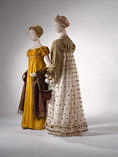- Home
-
History
- ANCIENT HISTORY
-
AMERICAN HISTORY
- Colonial American History Unit Study
- Ame Rev teacher 9 week Unit Study
- Constitution and the Bill of Rights Unit Study
- The First 5 Presidents
- Little House on the Prairie Unit Study
- Gold Rush: Sutter's Fort
- 1900's in American History
- Slavery in America
- Civil War unit
- Westward Expansion Pioneers
- Immigration Unit Study
- The Great Depression & The Dust Bowl
- Martin Luther King Jr Lessons
- WORLD HISTORY
- Literature
-
Geography
-
Science
-
HIGH SCHOOL
- List of FREE Unit Studies
- Common Core Talking Points
- Terms of Use
- Career Exploration
- Reflections
- Home
-
History
- ANCIENT HISTORY
-
AMERICAN HISTORY
- Colonial American History Unit Study
- Ame Rev teacher 9 week Unit Study
- Constitution and the Bill of Rights Unit Study
- The First 5 Presidents
- Little House on the Prairie Unit Study
- Gold Rush: Sutter's Fort
- 1900's in American History
- Slavery in America
- Civil War unit
- Westward Expansion Pioneers
- Immigration Unit Study
- The Great Depression & The Dust Bowl
- Martin Luther King Jr Lessons
- WORLD HISTORY
- Literature
-
Geography
-
Science
-
HIGH SCHOOL
- List of FREE Unit Studies
- Common Core Talking Points
- Terms of Use
- Career Exploration
- Reflections
Unit 1: Napoleon Unit Study

Napoleon Bonaparte
was a French military and political leader who rose to prominence during the latter stages of the French Revolution and its associated wars in Europe. Napoleon's Empire. Napoleon was a masterful ruler. He established a number of reforms that brought peace and stability back to France. Napoleon—benefiting perhaps by the new belief in equality after the French Revolution—rose very quickly from obscurity to brigadier general to become commander of the Army of Italy. He took over France, and proclaimed himself emperor in 1804. For the next eight years his armies marched through Europe, from Portugal in the west and as far as the Russian border in the east. But after a disastrous attack on Moscow, which cost hundreds of thousands of lives, Napoleon was forced to abdicate in 1814 and was exiled to the island of Elba, just off the coast of Tuscany. Napoleon arrived on Elba on May 4, 1814, as “Emperor and Ruler of Elba,” a position he appears to have taken quite seriously. Once on the island, he began making improvements. He built a residence for himself out of a mill; reformed the government; and improved the roads, bridges, iron mines, and harbors. In 1815 Napoleon left the island to reclaim his throne with 700 men, a million francs, four guns, three generals, and a supply of ammunition. When he reached the town of Laffrey, he was blocked by an infantry battalion. According to accounts of the time, he approached the opposing infantry, alone and unarmed, and shouted, “It is I, Napoleon. Kill your emperor if you wish.” There was silence, and then a shout of “Vive l’Empreur!” Many of the soldiers abandoned their posts and joined him. After his opponents in Paris fled, Napoleon returned to the city for his coronation. Although he returned triumphantly, the French people never fully embraced him a second time, and European powers moved quickly to crush him. Defeated at Waterloo in June 1815, Napoleon abdicated soon after. The British sent him to St. Helena, where he spent the last six years of his life in a more distant and restrictive exile than he had experienced on Elba. - excerpt summary taken from Lesson Plans Ideas from Time Warp For more detailed information visit PBS Series Napoleon OUR DAILY LESSON PLANS FOR UNIT 1 |
OBJECTIVES
Mini Unit Studies: Explore one of more of these ares to discover and share with the group. The links below will get you started. Each page is a mini unit study on these topics. There are resources to help you create a lap book, a presentation with power point multimedia or any other way to get your audience excited about your topic. BIOGRAPHICAL UNIT STUDY a starting point for your studies...
ART LESSONS and Hands On Activities
bring the lessons alive with these creative activities. Color in the city of Paris while listening to audio books on your topic of choice. Explore the online Met exhibits in fashion for this time period from around the globe. Learn about the art of the period Neoclassical Art from artcyclopedia.com Visit PracticalPages.com and print out page 7 - 9 to create your own Art Era Timeline <print> filling in the information you found interesting 
click
to download print your own miniature city of Paris! 
Learn about fashion and style.
the MET has a display of Empire Style for the 1800's to give you a taste of the style of the era including fashion, furniture and weapons Empire Style |
Looking for more free printable resources for your Napoleon Unit Study. Please head over to DIY Homeschooler!
We also found a free Napoleon Notebooking page for you to record your new knowledge at BrightIdeasPress.
We also found a free Napoleon Notebooking page for you to record your new knowledge at BrightIdeasPress.



